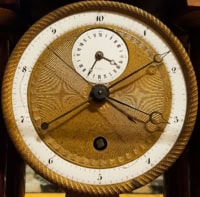The so-called fundamental physical constants might not be so constant after all. Astronomical measurements of the fine structure constant - the dimensionless number that determines the strength of interactions between charged particles and electromagnetic fields - suggest that this particular constant is increasing ever so slightly with time. If the result survives further scrutiny, it will have major implications for particle physics and cosmology (J K Webb et al 2001 Phys. Rev. Lett. 87 091301).
The fine structure constant, alpha, is defined as e2/c h-bar, where e is the charge on the electron, h-bar is the Planck constant divided by 2 pi, and c is the speed of light, and is about 1/137. If alpha changes with time then at least one of the fundamental constants of physics – e, h-bar or c – must also change with time. Although no evidence has ever been detected for any of these constants changing, such behaviour is predicted by various unified theories of the fundamental forces.
Fine structure can be observed as the splitting of certain energy levels in atoms. So if alpha changes over time, the emission and absorption spectra of these atoms will follow suit. One way to look for any changes in the value of alpha over the history of the universe would be to measure the absorption spectra of distant quasars at different redshifts, and compare the wavelengths of certain spectral lines with present-day values. This is what John Webb of the University of New South Wales (UNSW) in Australia, and colleagues at UNSW, Cambridge University, Pennsylvania State University, the Carnegie Observatories and the University of California at San Diego have done.
Webb and co-workers looked at four independent sets of data – three from optical telescopes and one from a radiotelescope – and found that alpha was smaller in the past than it is now. The result obtained from the optical data was four standard deviations from zero, which means that there is only about a one in 10 000 chance that the result is a statistical fluke. The team also eliminated some 13 potential sources of systematic errors.
In 1999 the same team reported inconclusive evidence for changes in the value of alpha over time based on observations of transitions in iron and magnesium in 17 different quasars. They have now reanalysed those data and combined them with three new sets of data: two sets of observations at higher redshifts taken with the Keck telescope, and radiotelescope observations by Chris Carilli of the National Radio Astronomy Observatory in New Mexico and co-workers. The new data include measurements on transitions in nickel, chromium, zinc, silicon and hydrogen.



